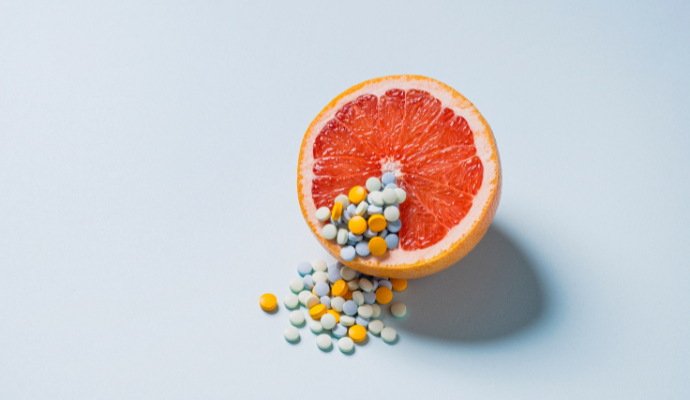Produce Prescription Programs Boost Diet, Health Outcomes
Researchers found patients in a produce prescription program ate more nutrient-rich foods, which may have bolstered their health outcomes.

Source: Getty Images
- Shoppers can now cross “better health outcomes” off their grocery lists, as more data continues to show the efficacy of produce prescription programs.
In a new study, researchers from Tufts University’s Friedman School of Nutrition Science and Policy found that produce prescription programs can increase nutritious food intake, cut food insecurity, and improve clinical outcomes like reducing hbA1C and hypertension.
“We were excited to see the results, which showed that participants who receive this incentive consume more fruits and vegetables, yielding clinically relevant outcomes,” senior study author Fang Fang Zhang, a nutritional epidemiologist and Neely Family Professor at the Friedman School, said in a statement.
“We need larger-scale implementation of these programs, which may play a role in improving care, in particular for lower-income adults with obesity, diabetes, or hypertension.”
Produce prescription programs are systems by which healthcare organizations pay for nutritious foods for individuals experiencing food insecurity or who have diet-related illnesses, like heart disease or diabetes. Using vouchers, debit cards, or loyalty cards, shoppers are able to get nutritious foods like fruits and vegetables at no cost.
READ MORE: Leading Types of Food Is Medicine Programs, Interventions
Ideally, produce prescription programs can help ameliorate the financial barriers to nutritious foods.
This most recent study’s findings are a step in the right direction.
The assessment included 1,800 kids and 2,000 adults who were low-income and at risk for cardiometabolic diseases. Each of these participants was enrolled in a produce prescription program during the study period of 2014 to 2020 that operated in 12 US states.
Most patients stayed in the produce prescription programs for around six months, and they participated using a voucher or card that they redeemed at select grocery stores or farmer’s markets. The average coverage cost was $43 in the adult program and $112 in the child programs.
Overall, the programs effectively addressed food security gaps, the researchers said, with the odds of being food insecure dropping by around a third. The researchers also observed a 0.85 cup per day increase in fruit intake and a 0.26 cup per day increase in vegetables.
READ MORE: Food Security: Key Dimensions of the Social Determinant of Health
That increase in healthy food access resulted in better health, the research team furthered. For one thing, patients said they felt better. The odds of improving at least one level in self-reported health status increased for both kids and adults.
Those health status improvements were reflected in clinical biomarkers, the research team said. Patients with diabetes saw a 0.3 percentage point drop in hbA1C and a decrease in BMI by 0.4 kg/m2 for those with overweight or obesity. Meanwhile, people with hypertension saw their blood pressure drop by an average of between five and eight millimeters of mercury.
These improvements were all greater among people with uncontrolled diabetes, obesity, or stage 2 hypertension, the researchers said.
Notably, the study looked at numerous different produce prescription programs, a characteristic that was important, according to Zhang. Because the study examined programs in 12 different US states, the team was able to see how effective Food Is Medicine can be on a diverse set of patients.
“Our findings provide important new evidence from a diverse set of programs for meaningful benefits of produce prescriptions, highlighting the need for clinical, policy, and healthcare payer and providers' efforts to implement produce prescription programs,” Zhang said of the study.
READ MORE: How Food Swamps, Food Security Led to Chronic Disease, Obesity
There is room for future study, though. According to Kurt Hager, the study’s first author, it will be important for industry experts to assess what happens when these types of food security programs end, for example.
"There is much we still need to learn about which programs are likely to be effective, how long they should operate, what happens to patient health outcomes when they end and more,” explained Hager, who completed the work as a doctoral student at the Friedman School and is now an instructor at the University of Massachusetts Chan Medical School. “The future of Food is Medicine will likely see pilots and expansion occurring alongside ongoing evaluations that will continually improve the quality of services provided.”
Right now, the future is promising for Food is Medicine. On top of this study, separate research has focused on how produce prescription programs have impacted diet-related illnesses like obesity. In June 2023, researchers from Mass General Brigham found that their produce prescription program cut childhood obesity by nearly one-half.
What’s more, these programs can yield a pretty hefty return on investment (ROI). A study also out of the Tufts Friedman School showed that Food is Medicine programs can cut some $40 billion in healthcare spending.
The study also showed produce prescription programs offered to people ages 40 to 79 with diabetes or food insecurity could generate a whopping 260,000 quality-adjusted life years (QALYs, or years spent living in good health).
Health policymakers are also throwing their weight behind the concept. Last September, the White House convened a weeklong conference on hunger, with some of the events centering on food as a social determinant of health, releasing the National Strategy on Hunger, Nutrition, and Health.
Among other targets, the strategy outlined access to food security programs like SNAP plus nutrition transparency on packaging and medically tailored meals.
